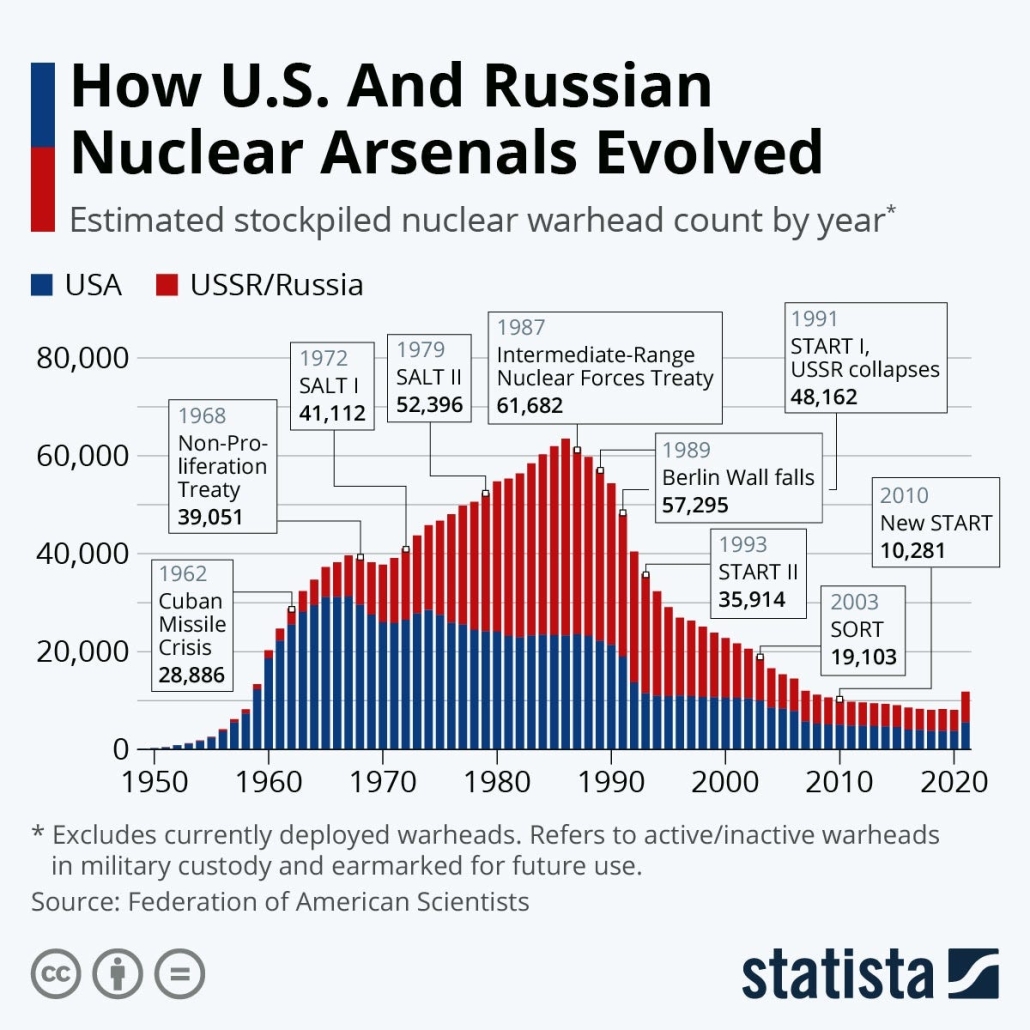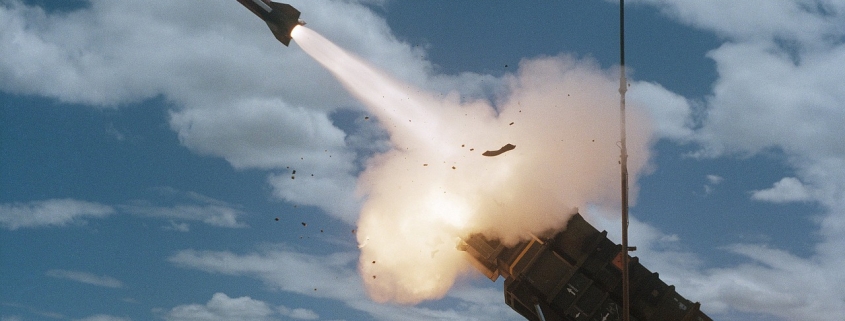What was the purpose of the Strategic Arms Limitation Talks?
Topic of Study [For H2 and H1 History Students]:
Paper 1: Understanding the Cold War (1945-1991)
Section A: Source-based Case Study
Theme I Chapter 3: End of Bipolarity [Collapse of the USSR and the end of the Cold War]
Historical context: Putting a halt to the arms race
Following the 13-day Cuban Missile Crisis, US President John F. Kennedy and Soviet Premier Nikita S. Khrushchev realised that the superpowers were dangerously close to nuclear annihilation, thus seeking to ease tensions. The Soviet leader once noted that both superpowers “had been squared off against each other, each with its finger on the button”. Subsequently, the two leaders were in consensus of banning nuclear testing.
On 5 August 1963, the Limited Nuclear Test Ban Treaty was signed by the United States, the Soviet Union and the Soviet Union. It was a remarkable development as negotiations took only 12 days before the Treaty was officially signed. A notable clause in the treaty states that prohibition of “nuclear weapons tests or other nuclear explosions under water, in the atmosphere, or in outer space”.
On 12 March 1964, the Conference of the Eighteen-Nation Committee on Disarmament was held in Geneva, Switzerland. Deputy Director of the U.S. Arms Control and Disarmament Agency, Adrian S. Fisher proposed a “verified freeze of strategic nuclear vehicles, both offensive and defensive”. Fisher continued, “That verified freeze, together with the third point, relating to a halt in the production of fissionable materials for weapon uses, would go far towards curbing the nuclear arms race”.
Yet, the Treaty had failed to slow down military build-up. In the mid-1960s, the Soviet Union and United States developed their own anti-ballistic missile (ABM) capabilities.
Preliminaries: SALT I
On 20 January 1969, US President Richard Nixon received a statement submitted by the Soviet Foreign Ministry to deliberate on strategic arms limitations. The Strategic Arms Limitation Talks were held in Helsinki, Finland, running from 17 November to 22 December 1969.
SALT I concluded with the signing of the Anti-Ballistic Missile Treaty (ABMT), which was signed by Richard Nixon and Leonid Brezhnev on 26 May 1972. The Strategic Arms Limitation Treaty I (SALT I) restricted the number of strategic ballistic missile launchers at current levels, Additional submarine-launched ballistic missile (SLBM) launchers could only be developed after the same number of intercontinental ballistic missile (ICBM) and SLBM launchers had been dismantled. Notably, SALT I had laid the foundation for subsequent arms control agreements.
The objective of the ABM Treaty, in essence, is to eliminate the deployment of a large-scale ABM strategic defense, making each party a hostage to the other. The ABM Treaty was amended in 1974 by a protocol reducing each party’s permitted deployment areas from two to one, thereby reducing strategic defense deployments to a level just short of abolition.
[…] The treaty prescribes reviews every five years; the first such review was in 1977, and subsequent reviews were held in 1982, 1988, 1993, and 1999.
While the system the United States chose to deploy (Grand Forks) was placed on inactive status in 1976, after only six months of operation, the Russian ABM defense around Moscow remains operational, though its effectiveness is uncertain.
An excerpt taken from “Cornerstones of Security: Arms Control Treaties in the Nuclear Era” by Damien J. LaVera and Thomas Graham Jr.
Continuation: SALT II and breakdown
The second round of talks took place in late 1972. These talks lasted till 1979 under the aegis of three successive Presidents, Richard Nixon, Gerald Ford and Jimmy Carter. During the Vladivostok Summit of 1974, Ford and Brezhnev came to a consensus on establishing a framework of a SALT II agreement. Eventually, the SALT II Treaty was signed by Carter and Brezhnev in Vienna on 18 June 1979.
The main goal of SALT II was to replace the Interim Agreement with a sustained comprehensive Treaty that provided broad limits on strategic offensive weapons. For instance, the agreement included a “2,400 equal aggregate limit on strategic nuclear delivery vehicles (ICBMs, SLBMs, and heavy bombers) of the sides”.
Yet, the Treaty never took effect formally. Although the 1972 ABMT restricted a range of nuclear weapons, there were unresolved matters. The USA was concerned with the Soviet Union’s obsession with the arms race. In contrast, the Soviet Union held suspicions towards the USA due to the latter’s strategic relationship with communist China.
Similarly, the new Tu-22M ‘Backfire’ bomber, which could be used for both conventional and nuclear missions, was far more capable than the older Tu-16s and Tu-95s that preceded it, and became a particular problem in the SALT II negotiations held during the Carter administration.
The non-ratification of the 1979 SALT II Treaty marks the end of this period of the Cold War. The pace of the Soviets’ strategic modernization, and the rapid deployment of accurate MIRVs on their ICBM force in particular, called the entire arms control process into question. SALT II capped the numbers of delivery vehicles on both sides, and imposed limits on the numbers of warheads each could carry. Critics believed it also locked the US into an increasingly dangerous strategic position.
An excerpt taken from “Arms Races in International Politics: From the Nineteenth to the Twenty-First Century” by Thomas Mahnken, Joseph Maiolo and David Stevenson.
With reference to the illustration below provided by Statista, nuclear warhead stockpiles did not diminish even though SALT I and SALT II were signed in the 1970s. The Soviet Union continued to increase its nuclear arsenal till the Intermediate-Range Nuclear Forces (INF) Treaty was signed on 8 December 1987.

What can we learn from this article?
Consider the following question:
– Assess the view that the breakdown of the arms control agreements was the main cause of the renewed Cold War confrontation in the early 1980s.
Join our JC History Tuition to learn more about the End of the Cold War. The H2 and H1 History Tuition feature online discussion and writing practices to enhance your knowledge application skills. Get useful study notes and clarify your doubts on the subject with the tutor. You can also follow our Telegram Channel to get useful updates.
We have other JC tuition classes, such as JC Math Tuition and JC Chemistry Tuition. For Secondary Tuition, we provide Secondary English Tuition, Secondary Math tuition, Secondary Chemistry Tuition, Social Studies Tuition, Geography, History Tuition and Secondary Economics Tuition. For Primary Tuition, we have Primary English, Math and Science Tuition. Call 9658 5789 to find out more.







 https://pixabay.com/photos/gold-bars-wealth-finance-gold-bars-163519/
https://pixabay.com/photos/gold-bars-wealth-finance-gold-bars-163519/


